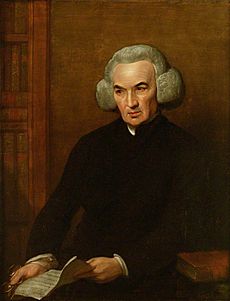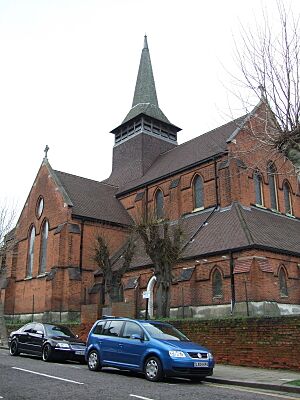Homerton facts for kids
Quick facts for kids Homerton |
|
|---|---|
 Chat's Palace has been an important local arts centre and music venue for 40 years. It is housed in the former Homerton Library, the new one is close by. |
|
| OS grid reference | TQ355855 |
| • Charing Cross | 4.5 mi (7.2 km) SW |
| London borough | |
| Ceremonial county | Greater London |
| Region | |
| Country | England |
| Sovereign state | United Kingdom |
| Post town | LONDON |
| Postcode district | E9/E5 |
| Dialling code | 020 |
| Police | Metropolitan |
| Fire | London |
| Ambulance | London |
| EU Parliament | London |
| UK Parliament |
|
| London Assembly |
|
Homerton is an area in London, England, located in the London Borough of Hackney. It's next to Hackney Central to the west and Lower Clapton to the north. To the east, you'll find Hackney Wick and Leyton, while South Hackney is to the south.
In 2019, about 14,658 people lived in Homerton. The area covers about 0.830 square kilometers. Homerton has many listed buildings, which are special buildings protected for their history or architecture.
Contents
Homerton's Story
How Homerton Began
Long ago, in the 11th or 12th century, there was already a building in Homerton. This means people lived here even before it was first written about in 1343. The name Homerton (or Humberton) likely came from a farm belonging to a woman named Hunburh.
The small village of Homerton grew along a road next to the Hackney Brook. This brook is now hidden underground. By 1605, Homerton was the busiest part of the Parish of Hackney. It became its own separate parish in 1846.
Life in Medieval Homerton
In medieval times, Homerton was mostly countryside. Farmers grew crops, fruits, and vegetables for the markets in the City of London. They also raised sheep and cattle, providing milk and cheese to the city.
People often brewed their own drinks at home. Some activities that were not allowed in the city, like tanning leather, happened here.
Wealth in Tudor Times
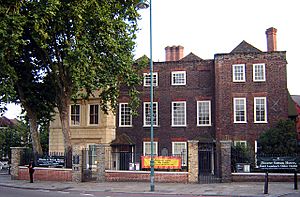
During the Tudor period, Homerton became a popular place to live for wealthy Londoners. Many large estates and grand houses were built on land that once belonged to the Knights Templar.
The village was split into Upper and Lower Homerton. Upper Homerton was separated from Hackney village by a field. In 1538, a famous diplomat named Sir Ralph Sadler owned some of this land. Later, around 1560, Thomas Sutton bought part of it. This land was used to help fund the Hospital of King James in Charterhouse. They built Sutton Place there between 1790 and 1806.
The Marshes
Marsh Road from Homerton High Street led across the Hackney Marshes. These marshes often flooded and were mainly used for grazing animals. A Roman stone road was found here in the 1770s.
By 1795, old mills on the marshes were used to prepare lead for lead paint. A new watermill was also set up by Prince Rupert to bore guns, but this project ended when he died in 1682.
Religion and Education
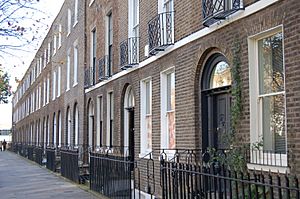
In the 1700s, Homerton was a good place to start schools and religious groups. This was because there was plenty of land, large houses, and people were open to different religious views.
One important school was Homerton College. It started here in 1768 to train Calvinist ministers. In 1896, the college moved to Cambridge. It later became a full college of the University of Cambridge in 2010. Students from Homerton College helped start the Glynn Cricket Club and Clapton Orient, which later became Leyton Orient F.C..
A Unitarian church, the Gravel Pit Meeting House, was built in Homerton between 1715 and 1716. Famous ministers preached here. Richard Price, a philosopher who supported the American Revolution, was a preacher from 1770. Important American figures like John Adams, who became the second president of the United States, and his wife Abigail attended his sermons.
Another famous minister was Joseph Priestley, who discovered oxygen. He came to Homerton in 1793 after facing trouble in Birmingham for his beliefs. A Blue Plaque now marks the site of the Gravel Pit Meeting House. Priestley said he was very happy living in Hackney.
Victorian Era Changes
In 1847, a railway line opened, bringing coal to the area. This led to the Hackney Brook being covered up and the loss of watercress fields. The railway also brought new buildings and public houses to Homerton High Street in the 1880s. Homerton Station opened in 1868.
The church of St Barnabas on Homerton High Street was built between 1843 and 1852. It was designed in a perpendicular style and is a Grade II listed building. It was damaged during World War II and rebuilt in 1958.
Other churches built in the area include St Luke (1872) and St Paul (1891). The Roman Catholic church of the Immaculate Heart of Mary was completed in 1883.
By the 1890s, some parts of Homerton had poor living conditions with many old, poorly built homes.
In the 1860s, London faced many illnesses. The Eastern Fever Hospital opened in 1870 to help prevent the spread of diseases. Most of its buildings were taken down in 1982. The site then became the modern Homerton University Hospital, which opened in 1986. This new hospital replaced the old Hackney Hospital.
Industry and Homes
The arrival of railways and the new hospital caused many wealthy residents to move away. The new factories in the area, like Berger Paints, brought workers who lived in the tightly packed Victorian streets.
From 1937, the London County Council built many new homes. This helped clear out some of the older, less well-built areas. The Lesney toy factory, which made Matchbox cars, was built in the 1940s near Homerton Road. It closed in 1990.
The oldest house still standing in Hackney is Sutton House on Homerton High Street. It was built in 1535 and is now looked after by the National Trust.
Homerton Today
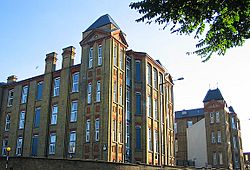
Famous people like 1970s singer Marc Bolan and actor Ray Winstone were born at Hackney Hospital. This hospital, originally a place for the poor, closed in 1995. The old hospital buildings were later used for mental health services.
Homerton is also known for its music scene. Toe Rag Studios, a recording studio that uses old-fashioned equipment, is located here. The famous band White Stripes recorded their album Elephant there. Other studios like Sound Savers and Gun Factory Studios are also in Homerton.
Homerton is home to Chats Palace arts centre, named after Chatsworth Road. This center hosts many types of performances, including music, comedy, and theater. The building was originally a library, built in 1912–13. When the council closed it in 1976, local people took it over to keep it as a community space. In 2014, the historic Chesham Arms pub became Hackney's first "Asset of Community Value," meaning it's important to the local community.
The Castle Cinema in Homerton reopened after people raised money to renovate it in 2016.
Education in Homerton
Some secondary schools in the area include Cardinal Pole Catholic School and the City Academy, Hackney.
Getting Around Homerton
Trains
Homerton has its own railway station, served by London Overground trains. You can travel west to Richmond and Clapham Junction, or east to Stratford. The first station opened in 1868 but closed in 1945. The current station opened in 1985.
Buses
Many London Buses routes serve Homerton, including routes 26, 30, 236, 242, 276, 308, 388, 394, 425, 488, and W15. There are also night bus routes N26 and N242.
 |
Clapton |  |
||
| Hackney Central | Hackney Marshes | |||
| South Hackney | Old Ford | Hackney Wick |



